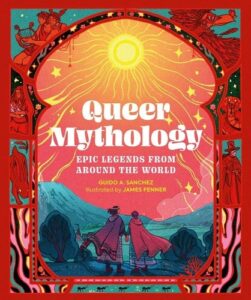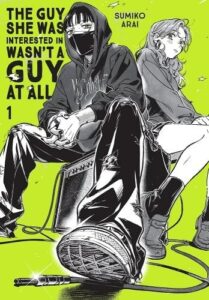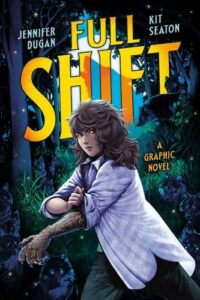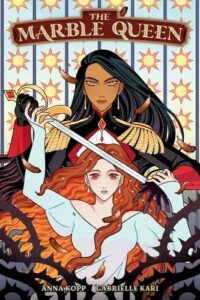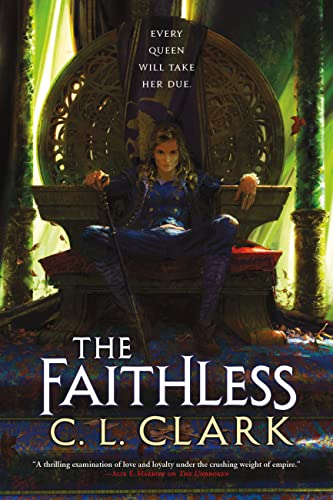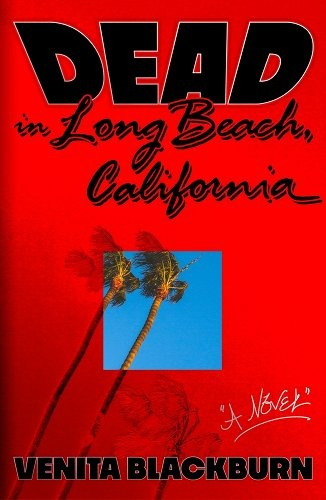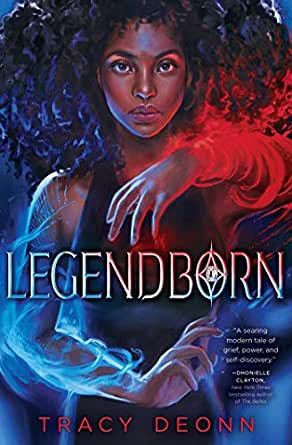These four books are listed in order of suitability for middle-to-high schoolers and deal with the timeless experiences of feeling like an outsider, finding the fortitude to be yourself, and the need for proper communication with partners. They’re great books to start conversations about these things, and have lovely art that are sure to make them perfect holiday presents.
I won’t forget how difficult high school was for me, with barely any representation of sapphic women to anchor my unwieldy emotions and anxieties to. And I can’t forget that, as wonderful as the media representation has been in recent years, there are still far too many younger folks still feeling that same fear and loneliness; they’re spending the holiday season surrounded by warmth and care and feeling a little (or a lot) like they’re on the outside looking in, worrying if they will be able to find care and community in the future. And whether they’ll end up having to choose between lovers and loved ones, family and the familiar.
While there are many who have to make these choices, I hope that whoever you’re considering buying books for won’t have to. Not while you’re in their corner. (Here’s a list of frequently challenged LGBTQ+ books to also consider gifting.)
Gosh, look at me getting all sentimental. I’ll stop with the maudlin misty-eyes and get on with the reviews. Wishing you all happy reading and happier holidays!
Queer Mythology: Epic Legends from Around the World by Guido A. Sanchez and illustrated by James Fenner
Let’s start with the younger ones. Bedtime stories are some of children’s earliest memories, and Queer Mythology has the has the potential to become a treasured collection. Written by Guido Sanchez and illustrated by James Fenner, it is exactly what the title says: a collection of myths from around the world that reminds queer readers that we have always been here and helps normalize minority experiences for others. Stories like those of Sedna from Inuit cosmology and Hi’iaka and Wahine-Omao from indigenous Hawaiian mythos spotlight sapphics across cultures.
The language is beautifully reminiscent of those old children’s paperbacks of Norse, Arthurian and Greek mythology I’d linger over in my elementary and middle school libraries. It has all their poetic gravitas, but explains gender, romantic attraction and the cultural specificity of those things in a way that is accessible for younger readers. Sanchez’s background as a middle-grade teacher is evident in how he frames the stories around themes like growing up, falling in love, falling out of it, and finding the courage of your convictions. The writing doesn’t shy away from the ways these experiences will be difficult and full of well-intentioned mistakes. But when, in all of human history, hasn’t it been? When, in all of human imagination, has growth not come with conflict?
Perfect as a book of bedtime stories for elementary schoolers, or an independent read for slightly older kids looking to place their experiences in a bigger context. While the body diversity of the women is a bit more limited than I would have liked (characters described as curvy or stocky in the text aren’t featured in their human forms on the corresponding illustrations), the art work is bright, painterly and vivid in a way that will take hold in children’s attention and imagination. There is also a good bit of gender diversity, which I appreciated.
The Guy She Was Interested in Wasn’t a Guy at All by Sumiko Arai
For the budding alternative girls in your life, the kind who will correct you on the difference between manhwa and manga and say they prefer the latter, there’s Sumiko Arai’s The Guy She Was Interested in Wasn’t a Guy at All. This is a feel-good funny, sweetly poignant, and you-have-to-read-it-to-fully-appreciate-the-art manga series about two teens who bond over a shared love of grunge and alt rock. It’s the adorkable love story of fashion-forward, extroverted Aya and the much more reticent, nerdy Mitsuki.
What really carries the humor is the titular misunderstanding. Aya initially mistakes a masked Mitsuki for a boy and proceeds to engineer run-ins with this cool, gentlemanly figure who really seems to understand her taste in music—and by extension, understand her. She’s acutely self-conscious of the fact that her tastes aren’t “popular” or accepted by her friends. But with Mitsuki, she’s starting to feel something new.
And the same goes for Mitsuki, who is utterly stymied by the unexpected attention.
The beauty of the story stems from Arai’s tenderness and compassion in portraying the awkwardness of first crushes and first loves. They both say clueless things and insightful things, make mistakes and get embarrassed. But they make space for each other’s growth, and it’s so heartwarming to read.
Another standout is Arai’s quiet understanding of how much context affects expression, and in turn, confidence. Out of school, Mitsuki is free to ditch her uniform and glasses for the black nail polish, piercings and baggy hoodies that give her quietness an air of cool, while Aya’s stereotypical sarcasm and bubbly big-heartedness are given space to shine and add depth to the intimacy of browsing through new releases and trading song recs. It’ll appeal to both older middle grade readers who’re figuring out their cultural tastes, and high schoolers who’re trying to find ways to make meaning of them.
Full Shift by Jennifer Dugan and illustrated by Kit Seaton
Written by Jennifer Dugan and illustrated by Kit Seaton, Full Shift breathes new life into the werewolf metaphor. A heartfelt story about grief, growth and unconventional families, it’s also got that good old “I’m a monster and the girl I like will never love me” angst. More straightforwardly for high schoolers, it deals with coming out, feeling like you don’t belong in your own body, and the weight of others’ expectations for your future.
The story centers around Tessa, a “half-shifter” who can only half-transform into a wolf and doesn’t feel like she’s doing too great of a job being human, either. The loss of a parent, the weight of her shifter secrets, and the possibility of a reciprocated crush on a nosy school reporter are leaving her feeling torn between worlds, and like she doesn’t have anyone who’ll help untangle her particular web of troubles. Her fear drives her to make some drastic, gut-wrenching mistakes that it will take connection, compassion, and community to resolve.
Dugan’s author bio says she “writes the kind of stories she wishes she had growing up.” And in doing so, she’s writing the kind of stories so many others will grow up seeing themselves in. This is a perfect antidote for the baby gay in your life who is Going Through It and might be getting a little too attached to queer-as-monstrous metaphors. Look, enough of us have spent waaay too much time microreading the subtext of Jennifer’s Body on message boards. This book is a sort of warm hug against that existential fear, with its themes of healing and the importance of receiving care as well as giving it. It’s about learning to find community and in doing so, find yourself… and it reminds readers that the real horror is the bigots and self-loathing we’ve had to fight along the way.
The characters are drawn with such detail and personality, from their facial expressions to their fashion sense. The story is pure small-town spec-fic shenanigans. And their flaws make everyone more human. While the scientist in me was more than a little frustrated by the use of the term “alpha”, the queer in me loved the emphasis on found family and trust.
The Marble Queen by Anna Kopp and illustrated by Gabrielle Kari
Written by Anna Kopp and illustrated by Gabrielle Kari, The Marble Queen is a fantasy romance that doesn’t shy away from the dark side of royal power struggles. Nor does it compromise on the romance. This is a great read for the young sapphic manhwa fan in your life. Also great for the girls who like to excitedly whisper “Kiss. Kiss. Kiiisss!” at the pages before getting hit with an emotional haymaker.
I appreciated the story’s handling of self-critical thoughts around whether the characters feel “worthy” of their futures, and the need for reciprocity of care in relationships. It’s a great vehicle for teenyboppers (and older folks!) dealing with similar anxieties to remember that inner demons are better faced together. The characters are all flawed, but their motivations are true to their writing and give the story an emotional nuance that will appeal to middle grade and some high school readers.
This will be a hit particularly webcomic and manhwa fans! The dark-haired, stoic-but-caring character who spent their formative years on a battlefield and the less weapons-proficient bright-haired character who helps them feel their feelings is such a staple that this is surefire catnip for sapphic readers who are looking for those squees and thrills centered around a f/f couple. The art style’s use of perspective to add dimension was really cool, too.
If I had to nitpick a little, I would say that there were moments where I would have loved to have more of a window into the characters’ inner thoughts. Frequent readers of royal family manhwas might also find a number of the plot beats and stylistic conventions a bit familiar and therefore want a bit more fleshing out to really get at the heart of the character, but the facial expressions and form/style conventions (e.g. blush lines) depict their feelings well.
Can I just say how happy I am that books like this exist for the gifting, and that they look cool enough that I can explain them as a good way to foster creativity and lifelong reading in their chronically online children? I’m waiting for holiday sales to snag copies of Sumiko Arai and Kamome Shirahama‘s manga, Full Shift, and Trung le Nguyen’s The Magic Fish for queer loved ones.
